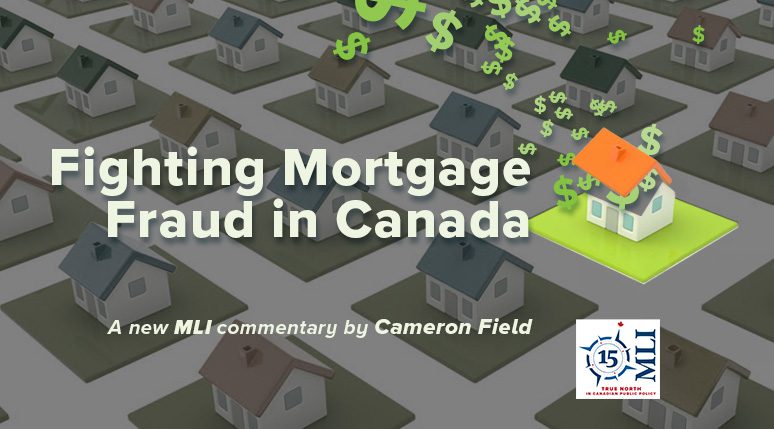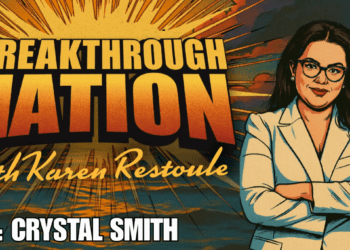By Cameron Field
May 13, 2025
Mortgage fraud in Canada has surged in recent years, raising deep concerns across multiple sectors. Anxiety is soaring among lenders as they face rising losses and inflated property prices. Meanwhile, organized criminal actors are overwhelming regulators and law enforcement. Several complex factors are behind the growing crisis, including pressures from housing affordability, rising interest rates, and the lingering effects of the COVID-19 pandemic. Fighting back against mortgage fraud will require effective government policies and improved coordination between public and private sector actors.
Mortgage fraud is a subset of financial crime, which has changed drastically in the 2020s and in the post COVID-19 era. Primarily, but not entirely, the changes have been in the volume and velocity of the crime. In 2024, the Canadian Anti-Fraud Centre (CAFC) received reports of frauds totalling more than $638 million; since 2021, fraud losses to Canadians have surpassed $2 billion dollars. These metrics are remarkable in that, as the CAFC argues, that figure represents only 5 to 10 per cent of all fraud losses. Using the CAFC’s framework and reporting analysis, we can estimate real losses during that period to be, at a minimum, $100 billion.
To effectively understand mortgage fraud in Canada – and financial crime more broadly – it is essential to view it as part of a complex and dynamic ecosystem. Mortgage fraud typically manifests in three primary forms: cybercrime, fraud, and money laundering. However, professionals studying and working in this field – including law enforcement, academics, business leaders, and policy-makers – often approach these components in a compartmentalized manner.
This fragmented perspective hinders their ability to grasp and address the scope and interconnections of mortgage fraud. To combat mortgage fraud and financial crime more effectively, all government and regulated actors should view the landscape as an ecosystem, rather than as silos. Larger law enforcement agencies usually have cyber crime, fraud, and asset forfeiture teams with a certain institutional compartmentalization between them. Larger financial institutions have a varying silo approach to these three areas as well. These silos must be broken down across our institutions to secure the future stability of Canada’s housing and financial sectors.
Key drivers of mortgage fraud in Canada
Mortgage fraud in Canada is soaring thanks to a host of factors related to the cost and supply of housing, which was further exacerbated by the pandemic. Housing affordability is a significant factor and is a driver of mortgage fraud for shelter. In a recent Statistics Canada Canadian Social Survey (CSS) – Quality of Life, Health, and Housing Costs, almost half of all Canadians reported being very concerned about housing and the rising costs of both rent and housing in general. With interest rates also rising, Canadians have continually had to re-examine and reconsider their revenue versus debt levels and their ability to pay for adequate shelter.
Since the 2010s the federal government has taken steps, amidst changing economic headwinds, to introduce successive stress test regimes for mortgage applicants. In 2022 the Bank of Canada started raising interest rates as part of its broader fiscal policy, placing even greater emphasis on borrowers’ financial viability. These measures, while intended to stabilize the market and ensure prudent lending, have had unintended consequences. Most notably, they have tightened access to credit and pushed many prospective homeowners – who may have previously qualified under earlier lending standards – out of eligibility for the homes they aspire to buy.
As a result, we have seen a sharp rise in “shelter-type” mortgage fraud, where individuals misrepresent income, employment status, or debt levels to meet lender requirements. This form of fraud tends to rise during times of tough economic conditions or declining housing affordability. As buyers feel rising pressure to secure home ownership by any means necessary, we see higher levels of document falsification and undisclosed liabilities – particularly among first-time buyers. Ironically, for this type of fraud, the stress test and higher interest rates meant to safeguard the financial system inadvertently increase the increased incentives for ordinary borrowers to commit fraud, undermining the very stability those policies aim to protect.
The ongoing housing crisis is a key driver of mortgage fraud in Canada. In such a tight market, many prospective homeowners have found themselves in bidding wars for existing properties or in long lineups for new ones. A 2022 housing assessment by the Canada Mortgage Housing Corporation (CMHC) estimated that if relatively current rates of new construction continue, the housing inventory will rise to almost 19 million housing units by 2030. However, to restore affordability, the CMHC projects that Canada will need an additional 3.5 million units; the crisis is significantly worse in British Columbia and Ontario, where two-thirds of the affordability gap exists, as well as in Quebec.
Studies show that the COVID-19 crisis greatly contributed to the current housing shortage. An analysis by the Toronto Star in mid-2020 found that the number of housing starts fell far below expectations. In that year, builders estimated multi-family starts of some 17,600 units, with an additional 19,000 units in 2021 in Toronto. Thanks to myriad delays, those starts ended up being only 10,050 units in 2020 and approximately 17,500 in 2021. This left urban planners, builders, developers, investors, and customers hoping for a catch-up of sorts. Instead, this perfect storm of housing shortages helped to set the stage for the sharp rise in mortgage fraud.
Understanding mortgage fraud: types and characteristics
The genesis of Canada’s housing crisis can be traced back to the 1980s–1990s when social housing policy implementation changed, and housing costs transferred to provincial ledgers. It’s a stubborn and resilient crime that is not easy to tackle. There are generally three types of this fraud. The first is mortgage fraud for shelter – where borrowers fraudulently apply for a mortgage for their principal residence in an effort to ensure they are qualified. Mortgage fraud for shelter is the most common and widespread. However, since it is typically driven by desperation in an unaffordable housing market rather than by a desire for profit, organized crime is not often involved.
The second form, mortgage fraud for profit, is less frequent, but poses a more systemic threat to the mortgage industry – especially when perpetrated by insiders such as brokers or agents who exploit their positions for financial gain.
However, the most concerning and damaging form is fraud for money laundering. Though harder to detect and less prevalent in volume, its impact is far-reaching. In this scenario criminals either directly, or through straw buyers, purchase properties leveraged in part by mortgages from unknowing or knowing lenders. It not only distorts property values and undermines trust in the financial system but also facilitates the integration of criminal proceeds into the legitimate economy. In this instance, criminals use cash down payments and ensuing mortgage payments to move criminally obtained funds into the mainstream financial system. In anti-money laundering disciplines this process involves the placement, layering, and integration of funds in an effort to fully launder them. The last stage of this third fraud is the eventual sale of the property and discharge of the mortgage, with all funds, including profits, reinvested into the criminal enterprise. This form of fraud is particularly difficult to uncover due to its complexity and the deliberate use of intermediaries, often making it a top priority for financial intelligence units and law enforcement agencies.
The increased prevalence of these fraudulent activities emphasizes the urgency for government intervention and have prompted the federal government to implement legislative measures aimed at addressing both mortgage fraud and the broader housing crisis.
Government and regulatory efforts to address fraud
To both mitigate the housing crisis and combat mortgage fraud, the federal government took legislative steps to bring more lending entities under the obligations of the Proceeds of Crime Money Laundering Terrorist Financing Act (PCMLTFA). For consumers, the federal government announced in the fall of 2024 new rules that offer younger Canadians a chance at a first mortgage. Briefly, these rules allowed for 30-year insured mortgage amortizations for first-time homebuyers purchasing new builds, increasing mortgage insurance to $1.5 million, and increasing eligibility for 30-year mortgage amortizations to all first-time homebuyers and to all buyers of new builds. These steps will help to improve the housing crisis – but they won’t alleviate the incidence of mortgage fraud. There will always be a “sales at all costs” culture within the mortgage and real estate industry and criminals need real estate to launder large amounts of illicit funds.
In 2024, the federal government included real estate brokers and sales representatives, as well as mortgage administrators, brokers, and lenders as reporting entities under the PCMLTFA. This change requires these industries to comply with all aspects of the regulations. This is a good step that will enhance financial intelligence going to the Financial Transactions Reports Analysis Centre of Canada (FinTRAC). After FinTRAC aggregates and synthesizes workable intelligence they can disclose it to law enforcement and national security agencies.
Mortgage fraud for money laundering also has national security implications for Canada. For instance, hostile state actors or state-sponsored actors can use it to facilitate other illicit activities such as money laundering or financing terrorism. The threats are real and need effective government policy, proactive law enforcement, and capacity in our court system. However, despite the pressing need for action, there are significant gaps in the current systems designed to combat this crime.
Weaknesses in fraud-mitigation efforts
To effectively combat mortgage fraud, it is crucial to address the gaps in the existing mitigation efforts. For instance, FinTRAC does not robustly encourage reporting entities to report mortgage fraud for shelter or profit, unless there are clear indications that it is linked to money laundering. The problem is that it’s exceedingly difficult for lenders, including financial institutions, to decide what is or is not reportable. In the world of volume sales, mortgages, and lending, most institutions do not have the bandwidth to “boil the ocean” on every mortgage application.
Another weakness is the requirement of lenders to have set “Know Your Client” (KYC) frameworks and requirements. In the PCMLTFA, the requirements are spelled out as a baseline. With the advent of AI-powered identity creation and identity theft, startlingly effective forged documents, and social engineering, lenders’ KYC frameworks are easy to overrun.
A final challenge is Canada’s underfunded and understaffed law enforcement and national security agencies. With tight resources and competing priorities, many crimefighting agencies can’t properly support financial crime units. Financial crime investigation is among the most specialized activities in law enforcement. Law enforcement agencies can’t simply drop random officers into these units and expect results – it takes training and experience.
Unfortunately, there is little national coordination of efforts to tackle financial crime in general, and mortgage fraud in particular. Although Canada in recent years has created new agencies and teams to better understand financial crime, there remains no one single agency to oversee and coordinate a national effort. A proposed “Financial Crime Agency of Canada” has yet to establish roots and sustainable funding and has been assigned to two different federal ministries with no clear mandate, funding model, staffing, or enforcement powers.
Recommendations for Combatting Mortgage Fraud in Canada
Given the complexities of financial crime both in Canada and around the world, and mortgage fraud in particular, several key recommendations can help modernize and strengthen the fight against these crimes. A coordinated national strategy is urgently needed to enhance prevention, detection, and enforcement.
1. Improve clarity around reporting obligations to FinTRAC
The federal government should immediately clarify what types of mortgage fraud must be reported to FinTRAC. The lack of clarity creates confusion for reporting entities, which results in underreporting or misreporting of critical financial intelligence. Streamlining these requirements would both enhance the quality of data collected and reduce the compliance burden on financial institutions, allowing them to focus their efforts on genuine risk-based due diligence and KYC practices. Clearer guidance would help align institutional practices across sectors and ensure that FinTRAC receives more actionable intelligence, leading to improved investigations and prosecutions.
2. Develop a unified KYC verification tool and enhance information sharing
A lack of standardization in KYC practices leaves room for inconsistency and exploitation, particularly by individuals seeking to manipulate or falsify identity and income documents. The federal government should collaborate with the financial sector, through established industry associations and umbrella groups, to create a unified and sustainable KYC verification tool. This would provide consistency in the validation of client information and reduce duplication across institutions. Additionally, the government should support and enhance real-time information sharing both between financial institutions and with law enforcement. This is essential for identifying suspicious activity early and responding quickly to threats, especially in cases where organized crime exploits the mortgage system to launder illicit funds. Without robust information sharing, institutions are left operating in silos, and threat actors are free to exploit the gaps.
3. Establish a central financial crime authority with enforcement powers
Canada currently lacks a central body with both the mandate and capacity to coordinate a unified response to financial crime. The establishment – or repurposing – of a national agency as the formal lead on financial crime would fill this critical gap. This agency must be equipped with enforcement authority, a strong public-private partnership model, and dedicated functions in research, intelligence, and strategy development. It should also oversee mandatory training and certification standards for industry professionals, ensure proactive identification of emerging risks, and be sustainably funded to reflect Canada’s long-term commitment to combatting financial crime. The authority would need to collaborate closely with units in police services across the country that already have their own teams; the goal would be to complement and enhance local activities, rather than duplicate them. Local law enforcement still needs enough resources and personnel to respond nimbly to issues that are less national in nature. This kind of centralized leadership would ensure that efforts are not just reactive and fragmented, but proactive, strategic, and internationally aligned. Without a clear lead, Canada risks falling behind global peers in tackling complex, transnational financial crimes that undermine economic integrity and public trust.
Conclusion: A unified approach to combatting mortgage fraud
The urgency of addressing mortgage fraud in Canada is undeniable, yet the path forward remains uncertain within our current system. Our existing efforts have fallen short, with our anti-fraud and anti-money laundering measures must be improved. To effectively combat this growing threat, we must foster greater collaboration between reporting entities, law enforcement, and other stakeholders, ensuring the free flow of actionable intelligence. At the heart of this effort should be a robust, centralized agency with clear regulatory guidance, enabling swift, coordinated action. Only then can we begin to mitigate the damage of mortgage fraud and safeguard the stability of Canada’s housing and financial systems.
About the author
Cameron Field, BA, MSc, CAMS, has over three decades of experience in law enforcement and financial crime prevention. He served 32 years with the Toronto Police Service in roles spanning drug enforcement, white-collar crime, behavioural assessment, and corporate training. As officer in charge of the Corporate Crimes Team, he led major fraud and money laundering investigations on a national and international scale. After policing, he joined BMO’s Anti-Money Laundering Office, contributing to AML program development, regulatory compliance, terrorist financing cases, and law enforcement partnerships. Field currently is the vice president of VIDOCQ, an investigation, intelligence, and risk management firm. Field holds a BA in Justice Studies and an MSc in Criminology, with a focus on cybercrime and identity theft. He is a Certified Anti-Money Laundering Specialist (CAMS) and an active lecturer, author, and peer reviewer. He serves on the Canadian Association of Chiefs of Police Private Sector Liaison Committee and holds leadership roles with ACAMS and other professional organizations in crime prevention and threat assessment.






